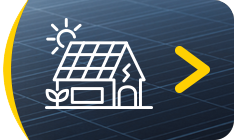- 16 Oct, 2017
- Solar Training

Are you curious about what our homes will look like in a few years? Futuristic housing projects are multiplying, combining comfort, energy efficiency, and reduced ecological impact. We've prepared a focus on the most innovative projects, and, unsurprisingly, photovoltaic energy plays a significant role.
Major Innovations in Housing
Our future homes will first be smart homes: with the evolution of home automation, you'll be able to control everything in your home centrally and effortlessly. Thanks to connected devices, your refrigerator and microwave will ease your life by directly placing orders to replenish your supplies (as already seen in some models) and also serve as entertainment hubs through internet and TV connections.
Future homes will also be intelligent in their construction; many architects are already working on this theme, rethinking materials, interior and exterior architecture to provide even more comfort and energy efficiency. Facades, for example, will be designed to limit heat in the summer and maximize natural light in the winter.
Finally, these homes will be energy autonomous and energy producers. The energy will power your electrical installations as well as your vehicle. This energy autonomy will be achieved through a combination of various renewable technologies such as solar and wind energy, or heat pumps and solar technology, which is currently very promising. The produced energy can be stored cleanly and sustainably using innovative storage methods, such as hydrogen.
Several projects aiming to meet these criteria have emerged, some of which seem straight out of science fiction movies. Yet, they are based on real technical advancements. Truly inspiring!
MFC 2020 Project
The MFC 2020 project has developed a positive energy house concept that meets all everyday needs and also considers mobility, aiming for zero greenhouse gas emissions. It is an energy-self-sufficient house built with clean materials and combines several renewable energies. With photovoltaic panels on the roof and canopy covering a total area of 124m², it can produce 15,714 kWh annually. This is enough to power the entire house and also the car: a Wall box charging station for an electric vehicle is provided in the garage. With advanced thermal insulation, it reduces energy loss by 64%. It is also designed to maximize natural light. All these technologies are controlled by a Smart Grid system, the true brain of the house, which monitors energy consumption and the use of available energies. For more information, you can take a virtual tour of the house on the website, with explanations included!
My Energie LifeStyle Project
Realized by SunPower, Whirlpool, and Ford, this project shares several similarities with the MFC project, with shorter-term goals. The project starts with a simple calculation: by combining renewable energies, innovative storage methods, and intelligent consumption management, we could save up to 60% on our energy bills and reduce CO2 emissions by 50%. The project includes rooftop panels and a hybrid electric vehicle that would serve as an energy storage medium. The system would monitor energy use, allowing for charging during off-peak hours and utilizing photovoltaic energy when necessary or advantageous.
In addition to reducing our ecological impact and energy bills, and increasing our comfort, these projects would help prevent network overloads and blackouts. So even if you can't opt for the "All inclusive" package of MFC 2020, start now with sustainable living, taking advantage of renewable energies and consumption optimization technologies!
All rights reserved











